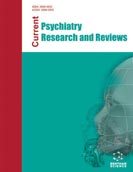
Abstract
A large body of literature indicates that the novel coronavirus disease (COVI D-19) was, and still is, a stressful and traumatic experience for different groups of people. Exposure to unexpected deaths or fear of death increases the risk of developing post-traumatic stress disorder (PTSD) anxiety disorder. Understanding the relationship between PTSD and SARS-CoV- 2 infection can help reduce the risk of developing psychiatric diseases, especially anxiety disorders. Here, we used the central mega databases of PubMed, Google Scholar, Scopus, Springer, and Science Direct. We explored the articles based on keywords and related articles. Social isolation stress during quarantine and hyperactivity of the hypothalamic-pituitary-adrenal (HPA) axis via increased cortisol synthesis and release seems to be key findings in current literature. Evidence shows that induced neuroendocrine changes in patients with COVID-19 can cause psychiatric diseases related to fear and anxiety. Studies suspect that angiotensinconverting enzyme 2 (ACE2) expressed in the hypothalamus and pituitary gland can be targeted by the infection and thereby could be a player in inducing psychiatric disorders. Here, we discuss the relationship between Covid-19 and post-traumatic stress disorder from psychoneuroendocrine- immune aspects and highlight the pro-inflammatory cytokines as mediators in the CNS-related processes, hoping to provide insights into the pathophysiology of PTSD.
Graphical Abstract
[http://dx.doi.org/10.1124/pr.114.010454] [PMID: 26315714]
[http://dx.doi.org/10.3892/ijmm.2014.2026] [PMID: 25482165]
[http://dx.doi.org/10.1001/jamainternmed.2020.1562] [PMID: 32275292]
[http://dx.doi.org/10.1148/radiol.2020201187] [PMID: 32228363]
[http://dx.doi.org/10.1007/s12020-020-02325-1] [PMID: 32346813]
[http://dx.doi.org/10.3390/v12020135] [PMID: 31991541]
[http://dx.doi.org/10.1128/JVI.02232-10] [PMID: 21325420]
[http://dx.doi.org/10.1016/j.jacc.2020.04.028]
[http://dx.doi.org/10.1038/s41368-020-0074-x] [PMID: 32094336]
[http://dx.doi.org/10.1186/s12906-015-0730-4] [PMID: 26122204]
[http://dx.doi.org/10.1021/acschemneuro.0c00122] [PMID: 32167747]
[http://dx.doi.org/10.1016/j.bbi.2020.04.077] [PMID: 32360439]
[http://dx.doi.org/10.1016/j.neuroscience.2020.04.044] [PMID: 32380269]
[http://dx.doi.org/10.1111/apha.13473] [PMID: 32223077]
[http://dx.doi.org/10.1016/j.psym.2020.05.022] [PMID: 32593478]
[http://dx.doi.org/10.1093/bja/aet077] [PMID: 23661405]
[http://dx.doi.org/10.1136/postgradmedj-2020-137934] [PMID: 32527756]
[http://dx.doi.org/10.1186/s12916-017-0916-3] [PMID: 28760142]
[http://dx.doi.org/10.3389/fimmu.2020.01170] [PMID: 32574266]
[http://dx.doi.org/10.1016/j.bbi.2020.04.049] [PMID: 32330593]
[http://dx.doi.org/10.1016/j.ijcard.2016.10.069] [PMID: 27823897]
[http://dx.doi.org/10.1177/1470320308099084] [PMID: 19126664]
[http://dx.doi.org/10.1161/CIRCRESAHA.120.317015] [PMID: 32264791]
[http://dx.doi.org/10.1016/j.physbeh.2020.113002] [PMID: 32525008]
[http://dx.doi.org/10.1152/ajpheart.00141.2007] [PMID: 17496218]
[http://dx.doi.org/10.1007/s10571-020-00861-y] [PMID: 32385549]
[http://dx.doi.org/10.1016/j.jinf.2020.03.037] [PMID: 32283152]
[http://dx.doi.org/10.1371/journal.pone.0071658] [PMID: 23977105]
[http://dx.doi.org/10.1080/10253890701350735] [PMID: 17514587]
[http://dx.doi.org/10.1523/JNEUROSCI.0892-11.2011] [PMID: 22016534]
[http://dx.doi.org/10.1080/10253890801892040] [PMID: 18609298]
[http://dx.doi.org/10.1197/j.aem.2004.11.015] [PMID: 15805323]
[http://dx.doi.org/10.1016/j.comppsych.2018.10.003] [PMID: 30343247]
[http://dx.doi.org/10.1016/j.encep.2020.04.005] [PMID: 32370982]
[http://dx.doi.org/10.1016/j.bbi.2020.05.038] [PMID: 32416290]
[http://dx.doi.org/10.1016/j.jpsychires.2005.12.006] [PMID: 16460760]
[http://dx.doi.org/10.1016/S0140-6736(20)30460-8] [PMID: 32112714]
[http://dx.doi.org/10.1016/j.genhosppsych.2009.03.001] [PMID: 19555791]
[PMID: 32216863]
[http://dx.doi.org/10.1007/s10753-014-9811-7] [PMID: 24429913]
[http://dx.doi.org/10.1016/j.bbi.2017.01.011] [PMID: 28089638]
[http://dx.doi.org/10.1016/j.jad.2019.01.029] [PMID: 30711869]
[http://dx.doi.org/10.1111/pcn.12820] [PMID: 30653780]
[http://dx.doi.org/10.1159/000097202] [PMID: 8963753]
[http://dx.doi.org/10.1371/journal.pone.0089104] [PMID: 24551226]
[http://dx.doi.org/10.3389/fimmu.2020.01446] [PMID: 32612617]
[http://dx.doi.org/10.1016/S0140-6736(20)30858-8] [PMID: 32278362]
[http://dx.doi.org/10.1016/j.cyto.2013.04.036] [PMID: 23693158]
[http://dx.doi.org/10.1016/j.coviro.2012.04.004] [PMID: 22572391]
[http://dx.doi.org/10.1016/j.coi.2014.12.012] [PMID: 25594890]
[http://dx.doi.org/10.1111/imr.12109] [PMID: 23947343]
[http://dx.doi.org/10.1016/S0140-6736(20)30628-0] [PMID: 32192578]
[http://dx.doi.org/10.1016/j.comppsych.2017.01.015] [PMID: 28160694]
[http://dx.doi.org/10.1016/S0140-6736(20)30183-5] [PMID: 31986264]
[PMID: 32171193]
[http://dx.doi.org/10.1016/j.cytogfr.2020.05.003] [PMID: 32446778]
[http://dx.doi.org/10.1073/pnas.0711241105] [PMID: 18490652]
[http://dx.doi.org/10.1089/vim.2005.18.41] [PMID: 15802953]
[http://dx.doi.org/10.1159/000452902]
[http://dx.doi.org/10.1128/JVI.02012-06] [PMID: 17079315]
[http://dx.doi.org/10.3389/fnbeh.2017.00018] [PMID: 28270754]
[http://dx.doi.org/10.1016/j.bbr.2019.112191] [PMID: 31473289]
[http://dx.doi.org/10.1007/s00204-014-1203-0] [PMID: 24500571]
[http://dx.doi.org/10.1038/ni.3656] [PMID: 28092376]
[http://dx.doi.org/10.1101/2020.03.24.20043075]
[http://dx.doi.org/10.1521/ijct.2014.7.2.149]
[http://dx.doi.org/10.3390/ijerph19148452] [PMID: 35886306]
[http://dx.doi.org/10.1016/j.bbi.2020.07.037] [PMID: 32738287]
[http://dx.doi.org/10.1016/j.eclinm.2020.100683] [PMID: 33490928]
[http://dx.doi.org/10.1002/jmv.26459] [PMID: 32841387]
[http://dx.doi.org/10.1016/j.jagp.2020.07.003] [PMID: 32753338]
[http://dx.doi.org/10.1136/thoraxjnl-2020-215818] [PMID: 33172844]
[http://dx.doi.org/10.1002/lary.28964] [PMID: 32617983]
[http://dx.doi.org/10.1016/j.toxlet.2014.01.039] [PMID: 24503016]
[http://dx.doi.org/10.1016/j.rmed.2020.106197] [PMID: 33120193]
[http://dx.doi.org/10.2196/20108] [PMID: 32716901]
[http://dx.doi.org/10.1007/s00408-021-00423-z] [PMID: 33569660]
[http://dx.doi.org/10.1016/S2215-0366(20)30203-0] [PMID: 32437679]









